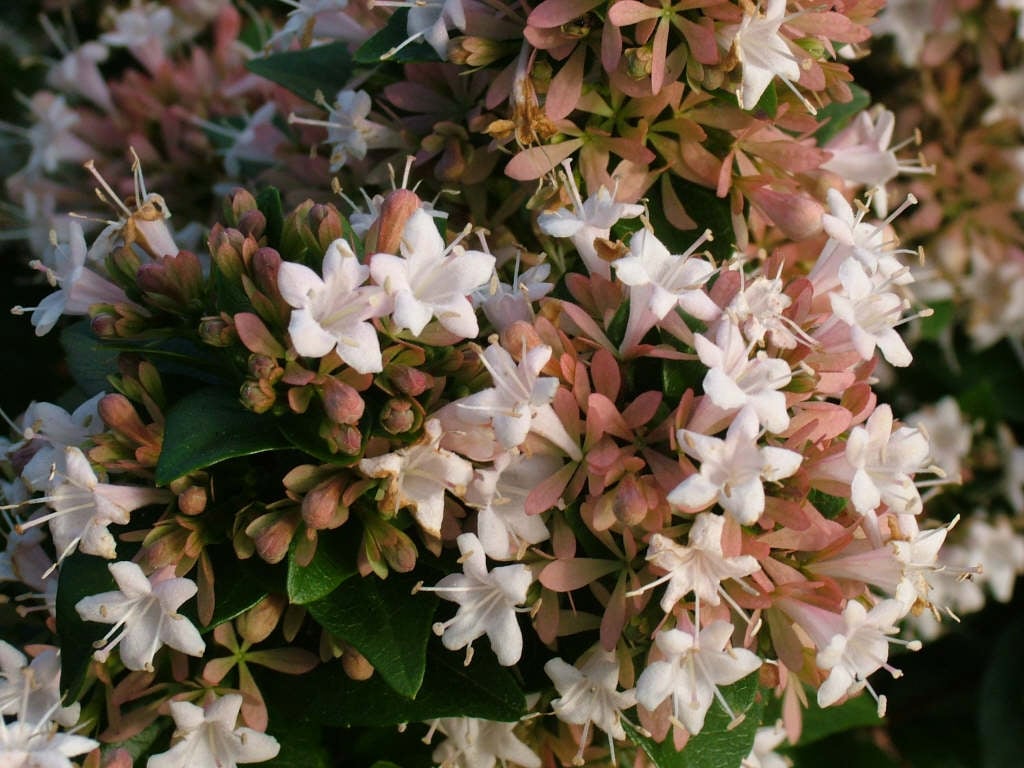Size
Ultimate height
1–1.5 metresTime to ultimate height
5–10 yearsUltimate spread
1–1.5 metresGrowing conditions
Moisture
Moist but well–drainedpH
Acid, Alkaline, NeutralColour & scent
| Stem | Flower | Foliage | Fruit | |
| Spring | Green | |||
|---|---|---|---|---|
| Summer | White | Green | ||
| Autumn | White | Green | ||
| Winter |
Position
- Full sun
Aspect
South–facing or East–facing
Exposure
Sheltered Hardiness
H5Botanical details
- Family
- Caprifoliaceae
- Native to GB / Ireland
- No
- Foliage
- Deciduous
- Habit
- Bushy
- Genus
Abelia can be deciduous or evergreen shrubs or small trees, with paired or whorled leaves and axillary or terminal clusters of funnel-shaped or trumpet-shaped flowers in summer and autumn, sometimes with conspicuous, colourful calyces
- Name status
Correct
- Plant range
- C and E China
How to grow
Cultivation
Very easy to grow in reasonable conditions although not fully hardy; requires a sheltered, sunny position
Propagation
Propagate by softwood cuttings in early summer or semi-hardwood cuttings in late summer
Suggested planting locations and garden types
- City and courtyard gardens
- Coastal
- Low Maintenance
- Wall side borders
Pruning
Pruning group 8. May need hard pruning (pruning group 6) every 3 to 4 years
Pests
Generally pest-free
Diseases
May be susceptible to honey fungus
Get involved
The Royal Horticultural Society is the UK’s leading gardening charity. We aim to enrich everyone’s life through plants, and make the UK a greener and more beautiful place.
